Waikiki is in a life-or-death battle against erosion on its multiple distinct beaches. Once a retreat for Hawaiian royalty, Waikiki evolved into the epicenter of Pacific tourism. Since the early 1900s, transformation has shaped the world-renowned destination we know today.
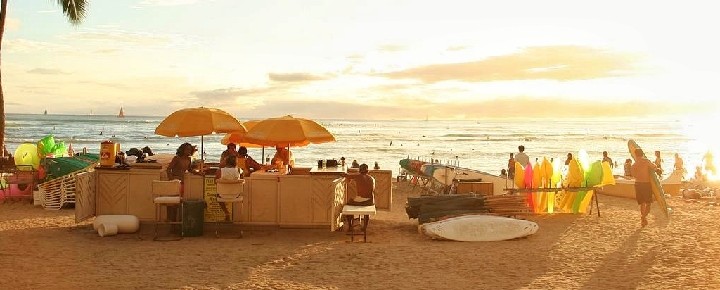

Following World War II, Waikiki Beach witnessed extensive restoration efforts alongside the rise of Honolulu tourism. Sand replenishment, which occurred from the 1920s to the 1970s, imported beach from as far as California. Recent projects have restored thousands of feet of shoreline to try to help slow chronic erosion.
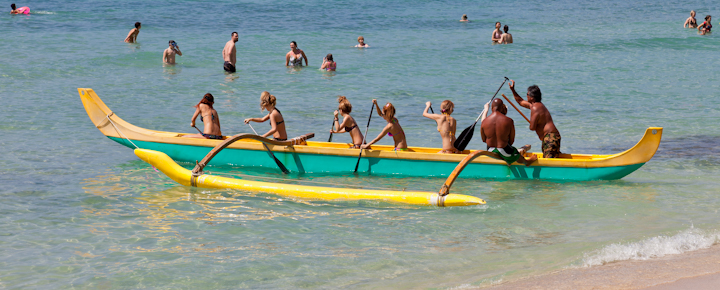

The Ala Wai Canal development led to the installation of groins and seawalls. These foreign structures contributed to abnormal sand loss and buildup along Waikiki. Removing two of the old groins a decade ago actually contributed to worsening of the erosion situation.
The beaches of Waikiki were once all connected.
Did you know that before 1950, the beaches of Waikiki were all connected? Since then, they have become distinct and separate. There are eight Waikiki beaches, including Ft. DeRussy, Duke Kahanamoku, Halekulani, Royal Hawaiian, Kuhio, Kapiolani, Queens, and Kaimana.
The state has been intent on restoration of Waikiki Beach, where nearly one-half of Hawaii visitor dollars are said to be spent. Despite adding almost 100k cubic meters of sand since 1950, most of the added sand is now gone. Rising sea level exacerbates the situation.
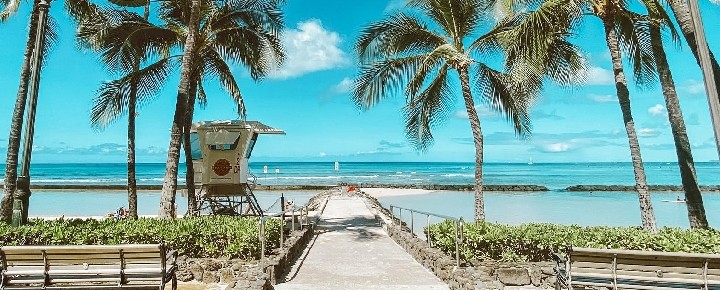

Hawaii plans to restore and maintain Waikiki Beach through 2080 or longer.
While the need to retreat from Hawaii coastlines is frequently suggestion due to erosion and rising sea level, the state of Hawaii’s Department of Land and Natural Resources (DLNR) proposes extensive new projects to maintain Waikiki Beach for more than another half-century. How these efforts will pan out, however, remains anyone’s guess.
The process begins with an Environmental Impact Study (EIS) and will be followed by more planning, funding, and regulatory hoops. The EIS examines multiple projects along Waikiki in an attempt to create a cohesive and long-term plan. Currently, the projects will focus on only four Waikiki beaches: Fort DeRussy, Halekulani, Royal Hawaiian, and Kuhio. Subsequently, the remaining beaches that are not a part of the current EIS will be addressed.
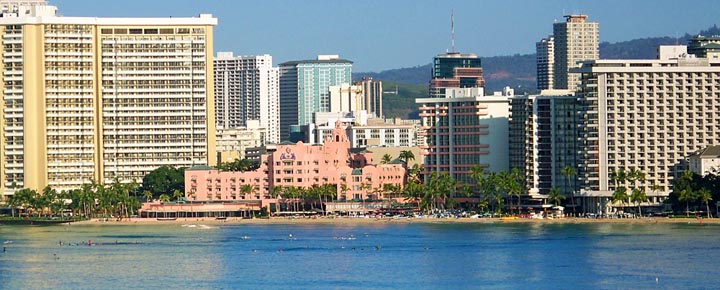

Sand replenishment along the beaches will be augmented with new groins from Fort DeRussy to the Royal Hawaiian. These are rock walls that reach out into the ocean. Other existing groins will also be reinforced. After that, some 60,000 cubic yards of beach sand will be brought from offshore to help create four new arch-shaped dry beaches.
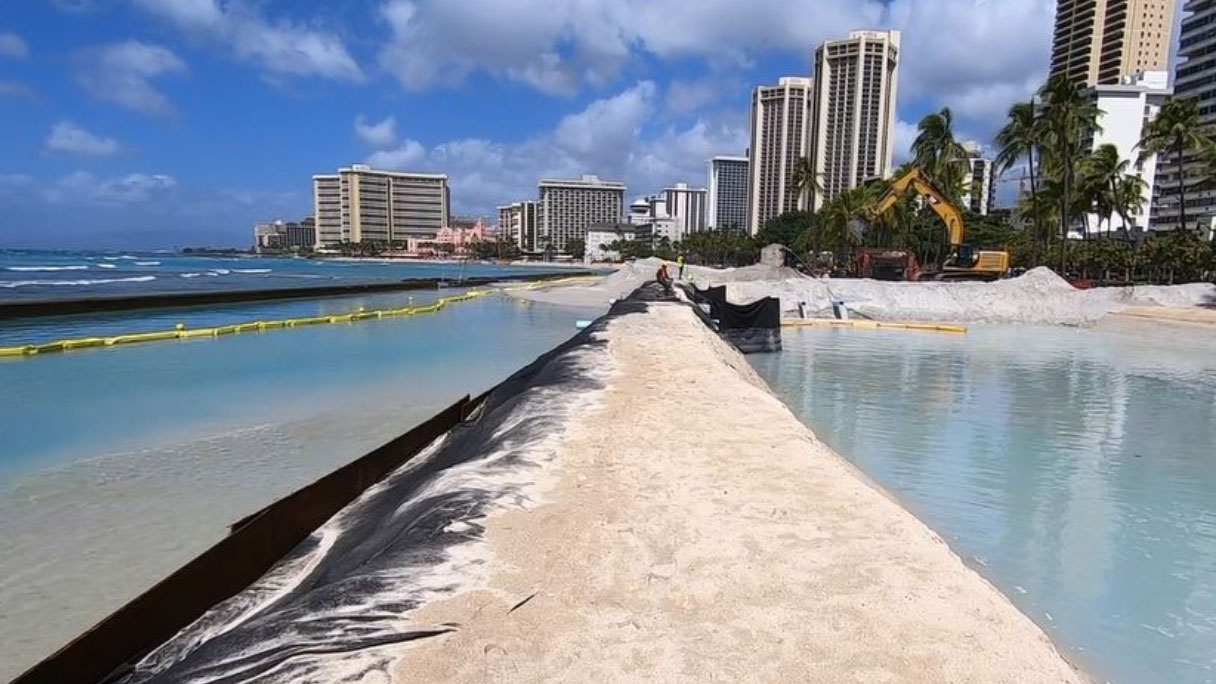

The cost and exact timeframe for the work remain unknown at this time. It will, however, be lengthy and expensive to be sure. The initial work is planned a proof of concept, which the state hopes to expand once results are in.
Ocean expected to rise by 3.5 feet by 2080.
The currently envisioned project is planned to be effective with up to 1.5 feet of sea level rise. But, given that the state estimates an increase of 3.5 feet by 2080, the project may need to be modified and elevated in the interim.
Waikiki Beach refurbishment funds pending.
The project has not been fully funded, with the state offering only $9 million of the hundreds of millions that will likely be required. It is hoped that federal funds will also be available.
Seawall controversy at Waikiki Beach.
While funding remains unclear, there is also debate from some community groups who remain concerned regarding the environmental impact of the initial plans, damage to surf breaks, and the cost burden, among other things. It isn’t even clear if the sea wall developments will be deemed legal under current law, which prohibits the construction of seawalls and other shoreline hardening structures in sandy beach areas and where they could interfere with recreational and ocean activity.
Also see Devastating Hawaii Beach Loss Will Include 88% Of Hanauma Bay.
Get Breaking Hawaii Travel News
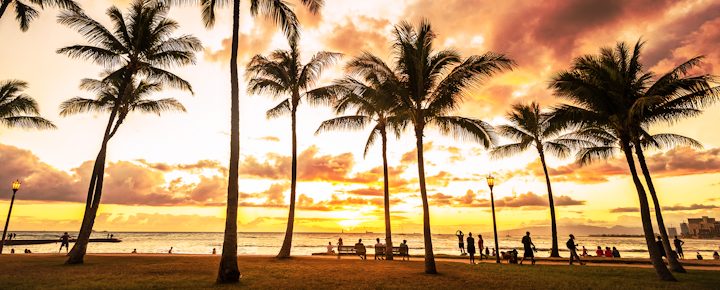


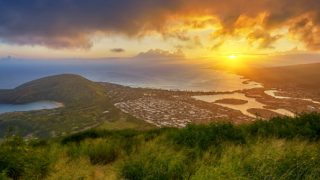
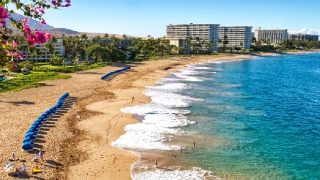
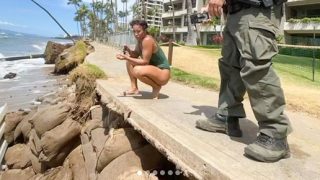
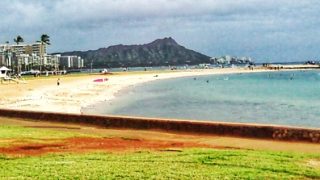
Response to January 21, 2024 News Story “Disappearing Waikiki Beach | The Battle to Save Hawaii’s Icon”
I appreciate the interest and concern about Waikīkī Beach and the ongoing public-private partnership effort to maintain this important resource. This article describes some of the state’s ongoing efforts to maintain and improve Waikīkī Beach. For clarification and additional information regarding these projects, please visit these websites:
wbsida.org/waikiki-beach-maintenance
dlnr.hawaii.gov/occl/waikiki/
Mahalo for news update. Since 1963 love hi. 1968-1985 was resident. Some ohana there. Mahalo
I snorkelers in Magic Island lagoon and saw various sea life. I snorkel within the sea wall at Prince Kuhio Park and seabed was like raked gravel, nothing living to be seen.
Weren’t the Maui Kaanapali Beach Properties recently told to move their properties because the state didn’t want to protect or add sand to their beaches? Are the resorts of Waikiki more important for some reason? (Beyond the fact that the visitor $ is 50% of total.)
I’d say if it’s okay for one why not the other? Or maybe it’s not a good idea for either?
Very interesting article. Keep it up! I want to read it again in detail when I have more time …
I see. Sand for the beach over housing for Hawaiians.
One of the first things I was taught in elementary school was how volcanic islands rise from and sink into the ocean. Maybe the oceans aren’t rising but it’s the natural progression of the islands sinking.
How about letting our earth evolve naturally and not necessarily change it for our own selfish pleasure, but appreciate it for what it is. Use the money for improving the quality of life while we are still here.
30+ years of vacationing in Hawaii with most of that time spent at the Maui Eldorado which has a beach cabana. During some stays I could actually walk underneath the cabana and not be able to touch the plumbing or even the underside of the deck. And then within a week or so the “beach” came back with a vengeance such that the workers had to place solid panels on the outside of the railing to prevent the sand from overtaking the deck! If you “choose” to believe that stuff about the sea rising that’s on you but I’m not getting on that boat. The ocean given us beaches and it taken them away. Such is the cycle for beaches! And don’t forget that NYC was supposed to be underwater over 10 years ago and THAT did not happen either!
I read with great interest about eroding beaches here in Waikiki. One statement stood out. The ocean will rise 3.5’ feet by 2080, about 54,years from now. My question how much has it risen since 1945? Also, shouldn’t we the tax payers use anybody but our local government to solve issues? They’ve demonstrated many times their incompetence, i.e. rail comes to mind, H-3, etc etc etc
Can somebody explain to me how, as sea level rises (and it is and will continue for a while) that the only way to “save” beaches is to remove structures that are beachside so that erosion can create more beach? I mean, you lost all those neat beaches on Maui Nui.
A good web page to supplement your news letter is:
dlnr.hawaii.gov/occl/waikiki/
Since Hawaii wants to charge fees for tourists to support everything else, how about a “beach fee”? Here is how it could work: first a fee for walking along the beach. Then if someone steps in the water, another fee. If that person actually goes into the water, another fee, but this would be based on the persons weight. The bigger the person, the more displacement of water, the larger the fee. If a person has any sand on their feet or in their shoes, a “sand removal tax.” I figure that this would raise the necessary money to fund all the projects owed to supporters of your state legislature. Money for the beach? Just raise taxes.
ok, Joe B. That made me laugh! Very funny!
Waikiki beach is important to Hawaii and tourism revenue. I do find it a little hypocritical that there are concerns about Waikiki beach and restoration/ preservation. While there are reports of North Shore residents being fined up to a million dollars for doing the same to save there homes.